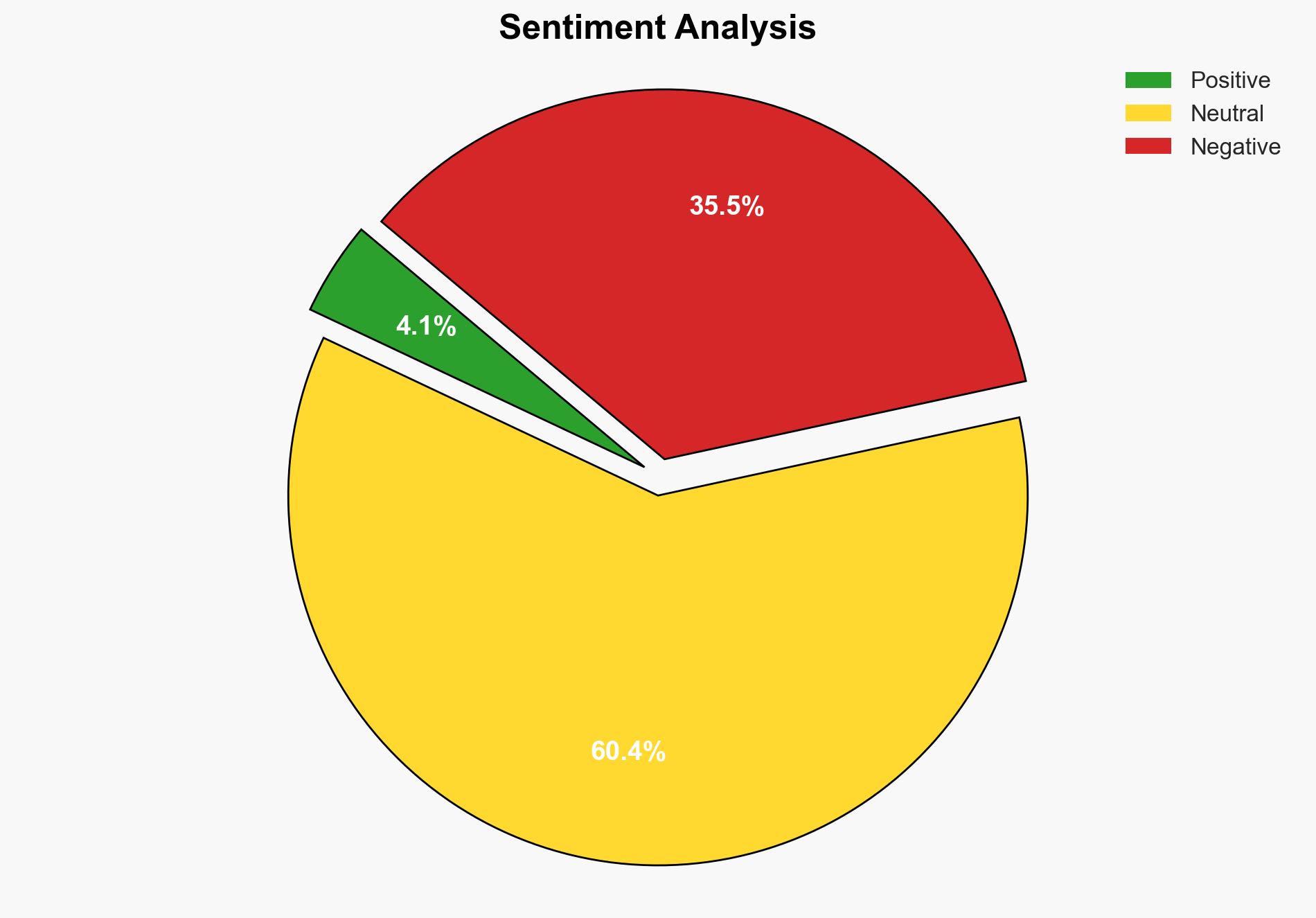Three killed in ‘massive’ Russian strikes on Kyiv officials say – BBC News
Published on: 2025-11-14
AI-powered OSINT brief from verified open sources. Automated NLP signal extraction with human verification. See our Methodology and Why WorldWideWatchers.
Intelligence Report: Three killed in ‘massive’ Russian strikes on Kyiv officials say – BBC News
1. BLUF (Bottom Line Up Front)
The most supported hypothesis is that the Russian strikes on Kyiv are part of a calculated escalation to pressure Ukraine and disrupt its infrastructure, with a moderate confidence level. Recommended actions include bolstering Ukrainian air defense systems and increasing diplomatic pressure on Russia through international channels.
2. Competing Hypotheses
Hypothesis 1: The strikes are a deliberate escalation by Russia to pressure Ukraine by targeting civilian infrastructure, aiming to weaken morale and disrupt daily life.
Hypothesis 2: The strikes are a response to Ukrainian attacks on Russian oil infrastructure, intended as a retaliatory measure to deter further Ukrainian operations.
Hypothesis 1 is more likely due to the pattern of targeting civilian infrastructure and the timing of the strikes, which align with previous Russian strategies to exert pressure on Ukraine. Hypothesis 2 is plausible but less supported by the evidence of widespread civilian impact.
3. Key Assumptions and Red Flags
Assumptions include the belief that Russia aims to maintain pressure on Ukraine through military means and that the strikes are part of a broader strategic plan. Red flags include potential misinformation from both sides, which could skew perceptions of intent and impact. Deception indicators might involve exaggerated claims of damage or casualties to influence international opinion.
4. Implications and Strategic Risks
The strikes could lead to further escalation in the conflict, potentially drawing in additional international actors and increasing the risk of broader regional instability. Economic impacts may arise from disruptions to Ukrainian infrastructure, affecting energy supplies and trade routes. There is also a risk of intensified cyber and informational warfare as both sides seek to control the narrative.
5. Recommendations and Outlook
- Strengthen Ukrainian air defense capabilities to mitigate the impact of future strikes.
- Engage in diplomatic efforts to rally international condemnation and potential sanctions against Russia.
- Best-case scenario: De-escalation through diplomatic channels leading to a ceasefire.
- Worst-case scenario: Escalation into a broader conflict involving additional regional actors.
- Most-likely scenario: Continued tit-for-tat strikes with periodic escalations and international diplomatic interventions.
6. Key Individuals and Entities
Vitali Klitschko, Mayor of Kyiv; President Volodymyr Zelensky of Ukraine; Veniamin Kondratyev, Krasnodar Governor; Andrei Kravchenko, Mayor of Novorossiysk.
7. Thematic Tags
Regional Focus: Eastern Europe, Ukraine, Russia, Conflict, Infrastructure, Military Strategy
Structured Analytic Techniques Applied
- Causal Layered Analysis (CLA): Analyze events across surface happenings, systems, worldviews, and myths.
- Cross-Impact Simulation: Model ripple effects across neighboring states, conflicts, or economic dependencies.
- Scenario Generation: Explore divergent futures under varying assumptions to identify plausible paths.
Explore more:
Regional Focus Briefs ·
Daily Summary ·
Methodology





